Anti-fibrinolytic use for minimising perioperative allogeneic blood transfusion
- PMID: 21412876
- PMCID: PMC4234031
- DOI: 10.1002/14651858.CD001886.pub4
Anti-fibrinolytic use for minimising perioperative allogeneic blood transfusion
Abstract
Background: Concerns regarding the safety of transfused blood have led to the development of a range of interventions to minimise blood loss during major surgery. Anti-fibrinolytic drugs are widely used, particularly in cardiac surgery, and previous reviews have found them to be effective in reducing blood loss, the need for transfusion, and the need for re-operation due to continued or recurrent bleeding. In the last few years questions have been raised regarding the comparative performance of the drugs. The safety of the most popular agent, aprotinin, has been challenged, and it was withdrawn from world markets in May 2008 because of concerns that it increased the risk of cardiovascular complications and death.
Objectives: To assess the comparative effects of the anti-fibrinolytic drugs aprotinin, tranexamic acid (TXA), and epsilon aminocaproic acid (EACA) on blood loss during surgery, the need for red blood cell (RBC) transfusion, and adverse events, particularly vascular occlusion, renal dysfunction, and death.
Search strategy: We searched: the Cochrane Injuries Group's Specialised Register (July 2010), Cochrane Central Register of Controlled Trials (The Cochrane Library 2010, Issue 3), MEDLINE (Ovid SP) 1950 to July 2010, EMBASE (Ovid SP) 1980 to July 2010. References in identified trials and review articles were checked and trial authors were contacted to identify any additional studies. The searches were last updated in July 2010.
Selection criteria: Randomised controlled trials (RCTs) of anti-fibrinolytic drugs in adults scheduled for non-urgent surgery. Eligible trials compared anti-fibrinolytic drugs with placebo (or no treatment), or with each other.
Data collection and analysis: Two authors independently assessed trial quality and extracted data. This version of the review includes a sensitivity analysis excluding trials authored by Prof. Joachim Boldt.
Main results: This review summarises data from 252 RCTs that recruited over 25,000 participants. Data from the head-to-head trials suggest an advantage of aprotinin over the lysine analogues TXA and EACA in terms of reducing perioperative blood loss, but the differences were small. Compared to control, aprotinin reduced the probability of requiring RBC transfusion by a relative 34% (relative risk [RR] 0.66, 95% confidence interval [CI] 0.60 to 0.72). The RR for RBC transfusion with TXA was 0.61 (95% CI 0.53 to 0.70) and was 0.81 (95% CI 0.67 to 0.99) with EACA. When the pooled estimates from the head-to-head trials of the two lysine analogues were combined and compared to aprotinin alone, aprotinin appeared more effective in reducing the need for RBC transfusion (RR 0.90; 95% CI 0.81 to 0.99).Aprotinin reduced the need for re-operation due to bleeding by a relative 54% (RR 0.46, 95% CI 0.34 to 0.62). This translates into an absolute risk reduction of 2% and a number needed-to-treat (NNT) of 50 (95% CI 33 to 100). A similar trend was seen with EACA (RR 0.32, 95% CI 0.11 to 0.99) but not TXA (RR 0.80, 95% CI 0.55 to 1.17). The blood transfusion data were heterogeneous and funnel plots indicate that trials of aprotinin and the lysine analogues may be subject to publication bias.When compared with no treatment aprotinin did not increase the risk of myocardial infarction (RR 0.87, 95% CI 0.69 to 1.11), stroke (RR 0.82, 95% CI 0.44 to 1.52), renal dysfunction (RR 1.10, 95% CI 0.79 to 1.54) or overall mortality (RR 0.81, 95% CI 0.63 to 1.06). Similar trends were seen with the lysine analogues, but data were sparse. These data conflict with the results of recently published non-randomised studies, which found increased risk of cardiovascular complications and death with aprotinin. There are concerns about the adequacy of reporting of uncommon events in the small clinical trials included in this review.When aprotinin was compared directly with either, or both, of the two lysine analogues it resulted in a significant increase in the risk of death (RR 1.39, 95% CI 1.02, 1.89), and a non-significant increase in the risk of myocardial infarction (RR 1.11 95% CI 0.82, 1.50). Most of the data contributing to this added risk came from a single study - the BART trial (2008).
Authors' conclusions: Anti-fibrinolytic drugs provide worthwhile reductions in blood loss and the receipt of allogeneic red cell transfusion. Aprotinin appears to be slightly more effective than the lysine analogues in reducing blood loss and the receipt of blood transfusion. However, head to head comparisons show a lower risk of death with lysine analogues when compared with aprotinin. The lysine analogues are effective in reducing blood loss during and after surgery, and appear to be free of serious adverse effects.
Conflict of interest statement
None known.
Figures











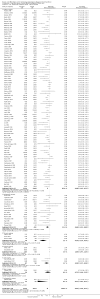
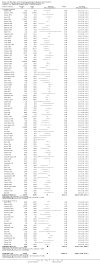

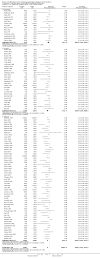
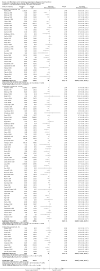
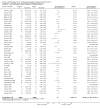
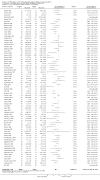

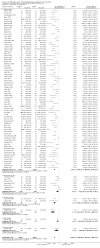
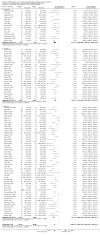


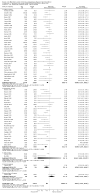
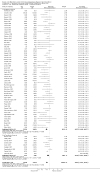





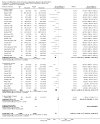





































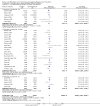


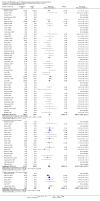

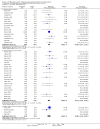




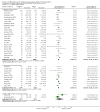





























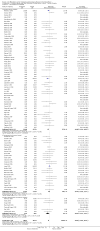
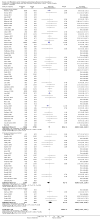





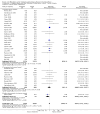

Update of
-
Anti-fibrinolytic use for minimising perioperative allogeneic blood transfusion.Cochrane Database Syst Rev. 2011 Jan 19;(1):CD001886. doi: 10.1002/14651858.CD001886.pub3. Cochrane Database Syst Rev. 2011. Update in: Cochrane Database Syst Rev. 2011 Mar 16;(3):CD001886. doi: 10.1002/14651858.CD001886.pub4. PMID: 21249650 Updated.
References
References to studies included in this review
Alajmo 1989 {published data only}
-
- Alajmo F, Calamai G, Perna AM, Melissano G, Pretelli P, Palmarini MF, et al. High‐dose aprotinin: hemostatic effects in open heart operations. Annals of Thoracic Surgery 1989;48(4):536‐9. - PubMed
Alderman 1998 {published data only}
-
- Alderman EL, Levy JH, Rich JB, Nili M, Vidne B, Schaff H, et al. Analyses of coronary graft patency after aprotinin use: results from the International Multicenter Aprotinin Graft Patency Experience (IMAGE) trial. Journal of Thoracic & Cardiovascular Surgery 1998;116(5):716‐30. - PubMed
Alvarez 1995 {published data only}
-
- Alvarez JM, Quiney NF, McMillan D, Joscelyne K, Connelly T, Brady P, et al. The use of ultra‐low‐dose aprotinin to reduce blood loss in cardiac surgery. Journal of Cardiothoracic & Vascular Anesthesia 1995;9(1):29‐33. - PubMed
Alvarez 2001 {published data only}
-
- Alvarez JM, Jackson LR, Chatwin C, Smolich JJ. Low‐dose postoperative aprotinin reduces mediastinal drainage and blood product use in patients undergoing primary coronary artery bypass grafting who are taking aspirin: a prospective, randomized, double‐blind, placebo‐controlled trial. Journal of Thoracic & Cardiovascular Surgery 2001;122(3):457‐63. - PubMed
Alvarez 2008 {published data only}
-
- Álvarez JC, Santiveri FX, Ramos I, Vela E, Puig L, Escolano F. Tranexamic acid reduce blood transfusion in total knee arthroplasty event when a blood conservation program is applied. Blood Conservation & Transfusion Alternatives 2008;48(3):519‐25. - PubMed
Amar 2003 {published data only}
-
- Amar D, Grant FM, Zhang H, Boland PJ, Leung DH, Healey JA. Antifibrinolytic therapy and perioperative blood loss in cancer patients undergoing major orthopedic surgery. Anesthesiology 2003;98(2):337‐42. - PubMed
Andreasen 2004 {published data only}
-
- Andreasen JJ, Nielsen C. Prophylactic tranexamic acid in elective, primary coronary artery bypass surgery using cardiopulmonary bypass. European Journal of Cardio‐Thoracic Surgery 2004;26(2):311‐7. - PubMed
Apostolakis 2008 {published data only}
Armellin 2001 {published data only}
-
- Armellin G, Casella S, Guzzinati S, Pasini L, Marcassa A, Giron G. Tranexamic acid in aortic valve replacement. Journal of Cardiothoracic & Vascular Anesthesia 2001;15(3):331‐5. - PubMed
Arom 1994 {published data only}
-
- Arom KV, Emery RW. Decreased postoperative drainage with addition of epsilon‐aminocaproic acid before cardiopulmonary bypass. Annals of Thoracic Surgery 1994;57(5):1108‐12. - PubMed
Ashraf 1997 {published data only}
-
- Ashraf S, Tian Y, Cowan D, Nair U, Chatrath R, Saunders NR, et al. "Low‐dose" aprotinin modifies hemostasis but not proinflammatory cytokine release. Annals of Thoracic Surgery 1997;63(1):68‐73. - PubMed
Asimakopoulos 2000 {published data only}
-
- Asimakopoulos G, Kohn A, Stefanou DC, Haskard DO, Landis RC, Talyor KM. Leukocyte integrin expression in patients undergoing cardiopulmonary bypass. Annals of Thoracic Surgery 2000;69:1192‐7. - PubMed
Baele 1992 {published data only}
-
- Baele PL, Ruiz‐Gomez J, Londot C, Sauvage M, Dyck MJ, Robert A. Systematic use of aprotinin in cardiac surgery: influence on total homologous exposure and hospital cost. Acta Anaesthesiologica Belgica 1992;43(2):103‐12. - PubMed
Bailey 1994 {published data only}
-
- Bailey CR, Kelleher A, Wielogorski AK. Randomised placebo‐controlled double blind study of three aprotinin regimes in primary cardiac surgery. British Journal of Surgery 1994;81:969‐73. - PubMed
Basora 1999 {published data only}
-
- Basora M, Gomar C, Escolar G, Pacheco M, Fita G, Rodriguez E, Ordinas A. Platelet function during cardiac surgery and cardiopulmonary bypass with low‐dose aprotinin. Journal of Cardiothoracic & Vascular Anesthesia 1999;13(4):382‐7. - PubMed
Bennett‐Guerrero 1997 {published data only}
-
- Bennett‐Guerrero E, Sorohan JG, Gurevich ML, Kazanjian PE, Levy RR, Barbera AV, et al. Cost‐benefit and efficacy of aprotinin compared with epsilon‐aminocaproic acid in patients having repeated cardiac operations: a randomized, blinded clinical trial. Anesthesiology 1997;87(6):1373‐80. - PubMed
Benoni 1996 {published data only}
-
- Benoni G, Fredin H. Fibrinolytic inhibition with tranexamic acid reduces blood loss and blood transfusion after knee arthroplasty: a prospective, randomised, double‐blind study of 86 patients. Journal of Bone & Joint Surgery ‐ British Volume 1996;78(3):434‐40. - PubMed
Benoni 2000 {published data only}
-
- Benoni G, Lethagen S, Nilsson P, Fredin H. Tranexamic acid, given at the end of the operation, does not reduce postoperative blood loss in hip arthroplasty. Acta Orthopaedica Scandinavica 2000;71(3):250‐4. - PubMed
Benoni 2001 {published data only}
-
- Benoni G, Fredin H, Knebel R, Nilsson P. Blood conservation with tranexamic acid in total hip arthroplasty: a randomized, double‐blind study in 40 primary operations. Acta Orthopaedica Scandinavica 2001;72(5):442‐8. - PubMed
Berenholtz 2009 {published data only}
Bernet 1999 {published data only}
-
- Bernet F, Carrel T, Marbet G, Skarvan K, Stulz P. Reduction of blood loss and transfusion requirements after coronary artery bypass grafting: similar efficacy of tranexamic acid and aprotinin in aspirin‐treated patients. Journal of Cardiac Surgery 1999;14(2):92‐7. - PubMed
Bert 2008 {published data only}
-
- Bert C, Buck F, Sergeant P, Hemelrijck J, Kasran A, Duppen V, et al. Aprotinin reduces cardiac troponin I release and inhibits apoptosis of polymorphonuclear cells during off‐pump coronary artery bypass surgery. Journal of cardiothoracic and vascular anesthesia 2008;22(1):16‐22. - PubMed
Bidstrup 1989 {published data only}
-
- Bidstrup BP, Royston D, Sapsford RN, Taylor KM. Reduction in blood loss and blood use after cardiopulmonary bypass with high dose aprotinin (Trasylol). Journal of Thoracic & Cardiovascular Surgery 1989;97(3):364‐72. - PubMed
Bidstrup 1990 {published data only}
-
- Bidstrup BP, Royston D, McGuinness C, Sapsford RN. Aprotinin in aspirin‐pretreated patients. Perfusion 1990;5:77‐81.
Bidstrup 1993 {published data only}
-
- Bidstrup BP, Underwood SR, Sapsford RN, Streets EM. Effect of aprotinin (Trasylol) on aorta‐coronary bypass graft patency. Journal of Thoracic & Cardiovascular Surgery 1993;105(1):147‐52. - PubMed
Bidstrup 2000 {published data only}
-
- Bidstrup BP, Hunt BJ, Sheikh S, Parratt RN, Bidstrup JM, Sapsford RN. Amelioration of the bleeding tendency of preoperative aspirin after aortocoronary bypass grafting. Annals of Thoracic Surgery 2000;69(2):541‐7. - PubMed
Blauhut 1994 {published data only}
-
- Blauhut B, Harringer W, Bettelheim P, Doran JE, Spath P, Lundsgaard‐Hansen P. Comparison of the effects of aprotinin and tranexamic acid on blood loss and related variables after cardiopulmonary bypass. Journal of Thoracic & Cardiovascular Surgery 1994;108(6):1083‐91. - PubMed
Boldt 1991 {published data only}
-
- Boldt J, Zickmann B, Czeke A, Herold C, Dapper F, Hempelmann G. Blood conservation techniques and platelet function in cardiac surgery. Anesthesiology 1991;75:426‐32. - PubMed
Boldt 1994 {published data only}
-
- Boldt J, Schindler E, Knothe C, Hammermann H, Stertmann WA, Hempelmann G. Does aprotinin influence endothelial‐associated coagulation in cardiac surgery?. Journal of Cardiothoracic & Vascular Anesthesia 1994;8(5):527‐31. - PubMed
Boylan 1996 {published data only}
-
- Boylan JF, Klinck JR, Sandler AN, Arellano R, Greig PD, Nierenberg H, et al. Tranexamic acid reduces blood loss, transfusion requirements, and coagulation factor use in primary orthotopic liver transplantation. Anesthesiology 1996;85(5):1043‐8. - PubMed
Brown 1997 {published data only}
-
- Brown RS, Thwaites BK, Mongan PD. Tranexamic acid is effective in decreasing postoperative bleeding and transfusions in primary coronary artery bypass operations: A double‐blind, randomized, placebo‐controlled trial. Anesthesia & Analgesia 1997;85(5):963‐970. - PubMed
Caglar 2008 {published data only}
-
- Caglar G S, Tasci Y, Kayikcioglu F, Haberal A. Intravenous tranexamic acid use in myomectomy: a prospective randomized double‐blind placebo controlled study. European journal of obstetrics, gynecology, and reproductive biology 2008;137(2):227‐31. - PubMed
Camarasa 2006 {published data only}
-
- Camarasa MA, Olle G, Serra‐Prat M, Martin A, Sanchez M, Ricos P, et al. Efficacy of aminocaproic, tranexamic acids in the control of bleeding during total knee replacement: a randomized clinical trial. British Journal of Anaesthesia 2006;96(5):576‐82. - PubMed
Capdevila 1998 {published data only}
-
- Capdevila X, Calvet Y, Biboulet P, Biron C, Rubenovitch J, d'Athis F. Aprotinin decreases blood loss and homologous transfusions in patients undergoing major orthopedic surgery. Anesthesiology 1998;88(1):50‐7. - PubMed
Carrera 1994 {published data only}
-
- Carrera A, Martinez MV, Garcia Guiral M, Herrero E, Peral A, Planas A. Utilizacion de altas dosis de aprotinina en cirugia cardiaca ‐ High doses of aprotinin in cardiac surgery. Revista Espanola de Anestesiologia y Reanimacion 1994;41:13‐9. - PubMed
Casas 1995 {published data only}
-
- Casas JI, Zuazu‐Jausoro I, Mateo J, Oliver A, Litvan H, Muniz‐Diaz E, et al. Aprotinin versus desmopressin for patients undergoing operations with cardiopulmonary bypass. A double‐blind placebo‐controlled study. Journal of Thoracic & Cardiovascular Surgery 1995;110(4 Pt 1):1107‐17. - PubMed
Casati 1999 {published data only}
-
- Casati V, Guzzon D, Oppizzi M, Cossolini M, Torri G, Calori G, Alfieri O. Hemostatic effects of aprotinin, tranexamic acid and epsilon‐aminocaproic acid in primary cardiac surgery. Annals of Thoracic Surgery 1999;68(6):2252‐6. - PubMed
Casati 2000 {published data only}
-
- Casati V, Guzzon D, Oppizzi M, Bellotti F, Franco A, Gerli C, et al. Tranexamic acid compared with high‐dose aprotinin in primary elective heart operations: effects on perioperative bleeding and allogeneic transfusions. Journal of Thoracic & Cardiovascular Surgery 2000;120(3):520‐7. - PubMed
Casati 2001 {published data only}
-
- Casati V, Gerli C, Franco A, Torri G, D'Angelo A, Benussi S, Alfieri O. Tranexamic acid in off‐pump coronary surgery: a preliminary, randomized, double‐blind, placebo‐controlled study. Annals of Thoracic Surgery 2001;72(2):470‐5. - PubMed
Casati 2002 {published data only}
-
- Casati V, Sandrelli L, Speziali G, Calori G, Grasso MA, Spagnolo S. Hemostatic effects of tranexamic acid in elective thoracic aortic surgery: a prospective, randomized, double‐blind, placebo‐controlled study. Journal of Thoracic & Cardiovascular Surgery 2002;123(6):1084‐91. - PubMed
Casati 2004 {published data only}
-
- Casati V, Della VP, Benussi S, Franco A, Gerli C, Baili P, et al. Effects of tranexamic acid on postoperative bleeding and related hematochemical variables in coronary surgery: Comparison between on‐pump and off‐pump techniques. Journal of Thoracic & Cardiovascular Surgery 2004;128(1):83‐91. - PubMed
Cicek 1996a {published data only}
-
- Cicek S, Demirkilic U, Kuralay E, Ozal E, Tatar H. Postoperative Aprotinin: Effect on blood loss and transfusion requirements in cardiac operations. Annals of Thoracic Surgery 1996;61:1372‐6. - PubMed
Cicek 1996b {published data only}
-
- Cicek S, Demirkilic U, Ozal E, Kuralay E, Bingol H, Tatar H, Ozturk OY. Postoperative use of aprotinin in cardiac operations: An alternative to its prophylactic use. Journal of Thoracic & Cardiovascular Surgery 1996;112(6):1462‐7. - PubMed
Cicekcioglu 2006 {published data only}
-
- Cicekcioglu F, Cagli K, Emir M, Topbas M, Catav Z, Sener E, et al. Effects if minimal dose aprotinin on blood loss and fibrinolytic system‐complement activation in coronary artery bypass grafting. Journal of Cardiac Surgery 2006;21:336‐41. - PubMed
Claeys 2007 {published data only}
-
- Claeys M A, Vermeersch N, Haentjens P. Reduction of blood loss with tranexamic acid in primary total hip replacement surgery. Acta chirurgica Belgica 2007;107(4):397‐401. - PubMed
Coffey 1995 {published data only}
-
- Coffey A, Pittmam J, Halbrook H, Fehrenbacher J, Beckman D, Hormuth D, et al. The use of tranexamic acid to reduce postoperative bleeding following cardiac surgery: A double‐blind randomized trial. American Surgeon 1995;61(7):566‐8. - PubMed
Cohen 1998 {published data only}
-
- Cohen G, Ivanov J, Weisel RD, Rao V, Mohabeer MK, Mickle DA. Aprotinin and dipyridamole for the safe reduction of postoperative blood loss. Annals of Thoracic Surgery 1998;65(3):674‐83. - PubMed
Colwell 2007 {published data only}
-
- Colwell CW, Chelly JE, Murkin JM, Stevens D, O'Keefe TJ, Hall R, et al. Randomized study of Aprotinin effect in transfusions and blood loss in primary THA. Clinical Orthopaedics & Relation Research 2007;465:189‐95. - PubMed
Corbeau 1995 {published data only}
-
- Corbeau JJ, Monrigal JP, Jacob JP, Cottineau C, Moreau X, Bukowski JG, et al. Comparaison des effets de l'aprotinine et de l'acide tranexamique sur le saignment en chirurgie cardiaque ‐ Comparative effects of aprotinin and tranexamic acid on blood loss in cardiac surgery. Annales Francaises d'Anesthesie et de Reanimation 1995;14:154‐61. - PubMed
Cosgrove 1992 {published data only}
-
- Cosgrove DM, 3d, Heric B, Lytle BW, Taylor PC, Novoa R, Golding LA, et al. Aprotinin therapy for reoperative myocardial revascularization: a placebo‐controlled study. Annals of Thoracic Surgery 1992;54(6):1031‐6. - PubMed
Cvachovec 2001 {published data only}
-
- Cvachovec K, Sechovska H, Berousek J, Popelka S, Hladikova M. Aprotinin (Antilysin Spofa)‐‐its effect on decreasing hemorrhage in the postoperative period in hip arthroplasty [Czech]. Acta Chirurgiae Orthopaedicae et Traumatologiae Cechoslovaca 2000;68(5):311‐4. - PubMed
D'Ambra 1996 {published data only}
-
- D'Ambra MN, Akins CW, Blackstone EH, Bonney SL, Cohn LH, Cosgrove DM, et al. Aprotinin in primary valve replacement and reconstruction: a multicenter, double‐blind, placebo‐controlled trial. Journal of Thoracic & Cardiovascular Surgery 1996;112(4):1081‐9. - PubMed
-
- D'Ambra MN, Lynch KE, Boccagno J, et al. The effect of perioperative administration of recombinant human erythropoietin (R‐HuEPO) in CABG patients: A double blind, placebo‐controlled trial. Anesthesiology: ASA Abstracts 1992;77(3A):A159.
D'Ambrosio 1999 {published data only}
-
- D'Ambrosio A, Borghi B, Damato A, D'Amato G, Antonacci D, Valeri F. Reducing perioperative blood loss in patients undergoing total hip arthroplasty. International Journal of Artificial Organs 1999;22(1):47‐51. - PubMed
Daily 1994 {published data only}
-
- Daily PO, Lamphere JA, Dembitsky WP, Adamson RM, Dans NF. Effect of prophylactic epsilon‐aminocaproic acid on blood loss and transfusion requirements in patients undergoing first‐time coronary artery bypass grafting. A randomized, prospective, double‐blind study. Journal of Thoracic & Cardiovascular Surgery 1994;108(1):99‐106. - PubMed
Dalmau 1999 {published data only}
-
- Dalmau A, Sabate A, Acosta F, Garcia‐Huete L, Koo M, Reche M, et al. Comparative study of antifibrinolytic drugs in orthotopic liver transplantation. Transplantation Proceedings 1999;31(6):2361‐2. - PubMed
Dalmau 2000 {published data only}
-
- Dalmau A, Sabate A, Acosta F, Garcia‐Huete L, Koo M, Sansano T, et al. Tranexamic acid reduces red cell transfusion better than epsilon‐aminocaproic acid or placebo in liver transplantation. Anesthesia & Analgesia 2000;91(1):29‐34. - PubMed
Dalmau 2004 {published data only}
-
- Dalmau A, Sabate A, Koo M, Bartolome C, Rafecas A, Figueras J, et al. The prophylactic use of tranexamic acid and aprotinin in orthotopic liver transplantation: a comparative study. Liver Transplantation 2004;10(2):279‐84. - PubMed
Defraigne 2000 {published data only}
-
- Defraigne JO, Pincemail J, Larbuisson R, Blaffart F, Limet R. Cytokine release and neutrophil activation are not prevented by heparin‐ coated circuits and aprotinin administration. Annals of Thoracic Surgery 2000;69(4):1084‐91. - PubMed
Del Rossi 1989 {published data only}
-
- DelRossi AJ, Cernaianu AC, Botros S, Lemole GM, Moore R. Prophylactic treatment of postperfusion bleeding using EACA. Chest 1989;96(1):27‐30. - PubMed
Deleuze 1991 {published data only}
-
- Deleuze P, Loisance DY, Feliz A, Hillion ML, Castanie JB, Richemond J, et al. Reduction of per‐ and postoperative blood loss with aprotinin (Trasylol) during extracorporeal circulation [French]. Archives des Maladies du Coeur et des Vaisseaux 1991;84(12):1797‐802. - PubMed
Demeyere 2006 {published data only}
-
- Demeyere R, Bosteels A, Arnout J, Gasthuisberg UV. Comparison of the effects of tranexamic acid, aprotinin and placebo on blood conservation, fibrinolysis and platelet function with extensive heart surgery. Critical Care 2006;10(Suppl 1):S67.
Desai 2009 {published data only}
Dietrich 1990 {published data only}
-
- Dietrich W, Spannagl M, Jochum M, Wendt P, Schramm W, Barankay A, Sebening F, Richter JA. Influence of high‐dose aprotinin treatment on blood loss and coagulation patterns in patients undergoing myocardial revascularization. Anesthesiology 1990;73(6):1119‐26. - PubMed
Dietrich 1992 {published data only}
-
- Dietrich W, Barankay A, Hahnel C, Richter JA. High‐dose aprotinin in cardiac surgery: three years' experience in 1,784 patients. Journal of Cardiothoracic & Vascular Anesthesia 1992;6(3):324‐7. - PubMed
Dietrich 1995 {published data only}
-
- Dietrich W, Dilthey G, Spannagl M, Jochum M, Braun SL, Richter JA. Influence of high‐dose aprotinin on anticoagulation, heparin requirement, and celite‐ and kaolin‐activated clotting time in heparin‐pretreated patients undergoing open‐heart surgery. A double‐blind, placebo‐controlled study. Anesthesiology 1995;83(4):679‐89. - PubMed
Dietrich 2008 {published data only}
-
- Dietrich W, Spannagl M, Boehm J, Hauner K, Braun S, Schuster T, et al. Tranexamic acid and aprotinin in primary cardiac operations: an analysis of 220 cardiac surgical patients treated with tranexamic acid or aprotinin. Anesthesia and analgesia 2008;107(5):1469‐78. - PubMed
Dignan 2001 {published data only}
-
- Dignan RJ, Law DW, Seah PW, Manganas CW, Newman DC, Grant PW, et al. Ultra‐low dose aprotinin decreases transfusion requirements and is cost effective in coronary operations. Annals of Thoracic Surgery 2001;71(1):158‐63. - PubMed
Diprose 2005 {published data only}
-
- Diprose P, Herbertson MJ, O'Shaughnessy D, Deakin CD, Gill RS. Reducing allogeneic transfusion in cardiac surgery: a randomized double‐blind placebo‐controlled trial of antifibrinolytic therapies used in addition to intra‐operative cell salvage. British Journal of Anaesthesia 2005;94(3):271‐8. - PubMed
Dorman 2008 {published data only}
Dryden 1997 {published data only}
-
- Dryden PJ, O'Connor JP, Jamieson WR, Reid I, Ansley D, Sadeghi H, et al. Tranexamic acid reduces blood loss and transfusion in reoperative cardiac surgery. Canadian Journal of Anaesthesia 1997;44(9):934‐41. - PubMed
Eberle 1998 {published data only}
-
- Eberle B, Mayer E, Hafner G, Heinermann J, Dahm M, Prellwitz W, et al. High‐dose epsilon‐aminocaproic acid versus aprotinin: antifibrinolytic efficacy in first‐time coronary operations. Annals of Thoracic Surgery 1998;65(3):667‐73. - PubMed
Ehrlich 1998 {published data only}
-
- Ehrlich M, Grabenwoger M, Cartes‐Zumelzu F, Luckner D, Kovarik J, Laufer G, et al. Operations on the thoracic aorta and hypothermic circulatory arrest: is aprotinin safe?. Journal of Thoracic & Cardiovascular Surgery 1998;115(1):220‐5. - PubMed
Ekback 2000 {published data only}
-
- Ekback G, Axelsson K, Ryttberg L, Edlund B, Kjellberg J, Weckstrom J, et al. Tranexamic acid reduces blood loss in total hip replacement surgery. Anesthesia & Analgesia 2000;91(5):1124‐30. - PubMed
Ellis 2001 {published data only}
-
- Ellis MH, Fredman B, Zohar E, Ifrach N, Jedeikin R. The effect of tourniquet application, tranexamic acid, and desmopressin on the procoagulant and fibrinolytic systems during total knee replacement. Journal of Clinical Anesthesia 2001;13(7):509‐13. - PubMed
Engel 2001 {published data only}
-
- Engel JM, Hohaus T, Ruwoldt R, Menges T, Jurgensen I, Hempelmann G. Regional hemostatic status and blood requirements after total knee arthroplasty with and without tranexamic acid or aprotinin. Anesthesia & Analgesia 2001;92(3):775‐80. - PubMed
Englberger 2002a {published data only}
-
- Englberger L, Markart P, Eckstein FS, Immer FF, Berdat PA, Carrel TP. Aprotinin reduces blood loss in off‐pump coronary artery bypass (OPCAB) surgery. European Journal of Cardio‐Thoracic Surgery 2002;22(4):545‐51. - PubMed
Englberger 2002b {published data only}
-
- Englberger L, Kipfer B, Berdat PA, Nydegger UE, Carrel TP. Aprotinin in coronary operation with cardiopulmonary bypass: does "low‐dose" aprotinin inhibit the inflammatory response?. Annals of Thoracic Surgery 2002;73(6):1897‐904. - PubMed
Fauli 2005 {published data only}
-
- Fauli A, Gomar C, Campistol JM, Alvarez L, Manig AM, Matute P. Kidney‐specific proteins in patients receiving aprotinin at high‐ and low‐dose regimens during coronary artery bypass graft with cardiopulmonary bypass. European Journal of Anaesthesiology 2005;22(9):666‐71. - PubMed
Feindt 1994 {published data only}
-
- Feindt P, Seyfert U, Volkmer I, Huwer H, Kalweit G, Gams E. Is there a phase of hypercoagulability when aprotinin is used in cardiac surgery?. European Journal of Cardio‐thoracic Surgery 1994;8:308‐14. - PubMed
Fergusson 2008 {published data only}
-
- Fergusson DA, Hébert PC, Mazer CD, Fremes S, MacAdams C, Murkin JM, et al. A comparison of aprotinin and lysine analogues in high‐risk cardiac surgery. The New England Journal of Medicine 2008;358(22):2319‐31. - PubMed
Findlay 2001 {published data only}
-
- Findlay JY, Rettke SR, Ereth MH, Plevak DJ, Krom RA, Kufner RP. Aprotinin reduces red blood cell transfusion in orthotopic liver transplantation: a prospective, randomized, double‐blind study. Liver Transplantation 2001;7(9):802‐7. - PubMed
Fraedrich 1989 {published data only}
-
- Fraedrich G, Weber C, Bernard C, Hettwer A, Schlosser V. Reduction of blood transfusion requirement in open heart surgery by administration of high doses of aprotinin ‐ preliminary results. Thoracic & Cardiovascular Surgeon 1989;37(2):89‐91. - PubMed
Garcia‐Enguita 1998 {published data only}
-
- Garcia‐Enguita MA, Ortega JP, Gomez C, Rasal S, Pascual A, Urieta SA. High dose aprotinin in complex total hip arthroplasty [abstract]. British Journal of Anaesthesia 1998;80(Suppl 1):80.
Garcia‐Huete 1997 {published data only}
-
- Garcia‐Huete L, Domenech P, Sabate A, Martinez‐Brotons F, Jaurrieta E, Figueras J. The prophylactic effect of aprotinin on intraoperative bleeding in liver transplantation: A randomized clinical study. Hepatology 1997;26(5):1143‐8. - PubMed
Garneti 2004 {published data only}
-
- Garneti N, Field J. Bone bleeding during total hip arthroplasty after administration of tranexamic acid. Journal of Arthroplasty 2004;19(4):488‐92. - PubMed
Gherli 1992 {published data only}
-
- Gherli T, Porcu A, Padua G, Marongiu GM, Antona C, Alamanni F, Bacciu PP. Reducing bleeding during extracorporeal circulation interventions by high doses of aprotinin [Italian]. Minerva Cardioangiologica 1992;40(4):121‐6. - PubMed
Gill 2009 {published data only}
-
- Gill JB, Chase E, Rosenstein AD. The use of tranexamic acid in revision total hip arthroplasty: a pilot study. Current Orthopaedic Practice 2009;20(2):152‐6.
Golanski 2000 {published data only}
-
- Golanski R, Golanski J, Chizynski K, Iwaszkiewicz A, Zaslonka J, Pietrucha T, et al. Low doses of aprotinin in aortocoronary bypass surgery ‐ advantages and disadvantages. Medical Science Monitor 2000;6(4):722‐8. - PubMed
Good 2003 {published data only}
-
- Good L, Peterson E, Lisander B. Tranexamic acid decreases external blood loss but not hidden blood loss in total knee replacement. British Journal of Anaesthesia 2003;90(5):596‐9. - PubMed
Gott 1998 {published data only}
-
- Gott JP, Cooper WA, Schmidt FE, Brown WM, Wright CE, Merlino JD, et al. Modifying risk for extracorporeal circulation: trial of four antiinflammatory strategies. Annals of Thoracic Surgery 1998;66:747‐54. - PubMed
Green 1995 {published data only}
-
- Green D, Sanders J, Eiken M, Wong CA, Frederiksen J, Joob A, et al. Recombinant aprotinin in coronary artery bypass graft operations. Journal of Thoracic & Cardiovascular Surgery 1995;110(4 Pt 1):963‐70. - PubMed
Greilich 2001 {published data only}
-
- Greilich PE, Okada K, Latham P, Kumar RR, Jessen ME. Aprotinin but not epsilon‐aminocaproic acid decreases interleukin‐10 after cardiac surgery with extracorporeal circulation: randomized, double‐blind, placebo‐controlled study in patients receiving aprotinin and epsilon‐aminocaproic acid. Circulation 2001;104(12 Suppl 1):265‐9. - PubMed
Greilich 2003 {published data only}
-
- Greilich PE, Brouse CF, Whitten CW, Chi L, Dimaio JM, Jessen ME. Antifibrinolytic therapy during cardiopulmonary bypass reduces proinflammatory cytokine levels: a randomized, double‐blind, placebo‐controlled study of epsilon‐aminocaproic acid and aprotinin. Journal of Thoracic & Cardiovascular Surgery 2003;126(5):1498‐503. - PubMed
Greilich 2004 {published data only}
-
- Greilich PE, Brouse CF, Rinder CS, Smith BR, Sandoval BA, Rinder HM, et al. Effects of epsilon‐aminocaproic acid and aprotinin on leukocyte‐platelet adhesion in patients undergoing cardiac surgery. Anesthesiology 2004;100(2):225‐33. - PubMed
Greilich 2009 {published data only}
-
- Greilich PE, Jessen ME, Satyanarayana N, Whitten CW, Nuttall GA, Beckham GA, et al. The effects of Epsilon‐Aminocaproic Acid and Aprotinin on fibrinolysis and blood loss in patients undergoing primary, isolated coronary artery bypass surgery: a randomized double‐blind, placebo‐controlled, noninferiority trial. Anesthesia & Analgesia 2009;109(1):15‐24. - PubMed
Groh 1993 {published data only}
-
- Groh J, Welte M, Azad SC, Anthuber M, Haller M, Kratzer MA. Does aprotinin really reduce blood loss in orthotopic liver transplantation?. Seminars in Thrombosis & Hemostasis 1993;19(3):306‐8. - PubMed
Harder 1991 {published data only}
-
- Harder MP, Eijsman L, Roozendaal KJ, Oeveren W, Wildevuur CR. Aprotinin reduces intraoperative and postoperative blood loss in membrane oxygenator cardiopulmonary bypass. Annals of Thoracic Surgery 1991;51(6):936‐41. - PubMed
Hardy 1993 {published data only}
-
- Hardy JF, Desroches J, Belisle S, Perrault J, Carrier M, Robitaille D. Low‐dose aprotinin infusion is not clinically useful to reduce bleeding and transfusion of homologous blood products in high‐risk cardiac surgical patients. Canadian Journal of Anaesthesia 1993;40(7):625‐31. - PubMed
Hardy 1997 {published data only}
-
- Hardy JF, Belisle S, Couturier A, Robitaille D. Randomized, placebo‐controlled, double‐blind study of an ultra‐low‐dose aprotinin regimen in reoperative and/or complex cardiac operations. Journal of Cardiac Surgery 1997;12(1):15‐22. - PubMed
Hardy 1998 {published data only}
-
- Hardy JF, Belisle S, Dupont C, Harel F, Robitaille D, Roy M, et al. Prophylactic tranexamic acid and epsilon‐aminocaproic acid for primary myocardial revascularization. Annals of Thoracic Surgery 1998;65(2):371‐6. - PubMed
Harley 2002 {published data only}
Harmon 2004 {published data only}
-
- Harmon DC, Ghori KG, Eustace NP, O'Callaghan SJ, O'Donnell AP, Shorten GD. Aprotinin decreases the incidence of cognitive deficit following CABG and cardiopulmonary bypass: a pilot randomized controlled study. Canadian Journal of Anaesthesia 2004;51(10):1002‐9. - PubMed
Havel 1992 {published data only}
-
- Havel M, Owen AN, Simon P, Teufelsbauer H, Zwoelfer W, Laczkovics A, et al. Decreasing use of donated blood and reduction of bleeding after orthotopic heart transplantation by use of aprotinin. Journal of Heart & Lung Transplantation 1992;11(2 Pt 1):348‐9. - PubMed
Havel 1994 {published data only}
-
- Havel M, Grabenwoger F, Schneider J, Laufer G, Wollenek, G, Owen A, et al. Aprotinin does not decrease early graft patency after coronary artery bypass grafting despite reducing postoperative bleeding and use of donated blood. Journal of Thoracic & Cardiovascular Surgery 1994;107(3):807‐10. - PubMed
Hayashida 1997 {published data only}
-
- Hayashida N, Isomura T, Sato T, Maruyama H, Kosuga K, Aoyagi S. Effects of minimal‐dose aprotinin on coronary artery bypass grafting. Journal of Thoracic & Cardiovascular Surgery 1997;114(2):261‐9. - PubMed
Hayes 1996 {published data only}
-
- Hayes A, Murphy DB, McCarroll M. The efficacy of single‐dose aprotinin 2 million KIU in reducing blood loss and its impact on the incidence of deep venous thrombosis in patients undergoing total hip replacement surgery. Journal of Clinical Anesthesia 1996;8(5):357‐60. - PubMed
Hei 2005 {published data only}
-
- Hei ZQ, Luo CF, Li SR, Ma WH, Luo GJ, Chi XJ. Effect of aprotinin on perioperative requirements of blood and liquid in severe hepatisis patients undergoing liver transplantation. Chinese Pharmaceutical Journal 2005;40(18):1432‐5.
Hekmat 2004 {published data only}
-
- Hekmat K, Zimmermann T, Kampe S, Kasper SM, Weber HJ, Geissler HJ, et al. Impact of tranexamic acid vs. aprotinin on blood loss and transfusion requirements after cardiopulmonary bypass: a prospective, randomised, double‐blind trial. Current Medical Research & Opinion 2004;20(1):121‐6. - PubMed
Hendrice 1995 {published data only}
-
- Hendrice C, Schmartz D, Pradier O, Coron T, Kucharcezwski C, d'Hollander A, et al. Effects of aprotinin on blood loss, heparin monitoring tests, and heparin doses in patients undergoing coronary artery bypass surgery. Journal of Cardiothoracic & Vascular Anesthesia 1995;9(3):245‐9. - PubMed
Hiipala 1995 {published data only}
-
- Hiippala S, Strid L, Wennerstrand M, Arvela V, Mantyla S, Ylinen J, et al. Tranexamic acid (Cyklokapron) reduces perioperative blood loss associated with total knee arthroplasty. British Journal of Anaesthesia 1995;74(5):534‐7. - PubMed
Hiipala 1997 {published data only}
-
- Hiippala ST, Strid LJ, Wennerstrand MI, Arvela JVV, Niemela HM, Mantyla SK, et al. Tranexamic acid radically decreases blood loss and transfusions associated with total knee arthroplasty. Anesthesia & Analgesia 1997;84(4):839‐44. - PubMed
Hill 1998 {published data only}
-
- Hill GE, Diego RP, Stammers AH, Huffman SM, Pohorecki R. Aprotinin enhances the endogenous release of interleukin‐10 after cardiac operations. Annals of Thoracic Surgery 1998;65(1):66‐9. - PubMed
Horrow 1990 {published data only}
-
- Horrow JC, Hlavacek J, Strong MD, Collier W, Brodsky I, Goldman SM, Goel IP. Prophylactic tranexamic acid decreases bleeding after cardiac operations. Journal of Thoracic & Cardiovascular Surgery 1990;99(1):70‐4. - PubMed
Horrow 1991 {published data only}
-
- Horrow JC, Riper DF, Strong MD, Brodsky I, Parmet JL. Hemostatic effects of tranexamic acid and desmopressin during cardiac surgery. Circulation 1991;84(5):2063‐70. - PubMed
Horrow 1995 {published data only}
-
- Horrow JC, Riper DF, Strong MD, Grunewald KE, Parmet JL. The dose‐response relationship of tranexamic acid. Anesthesiology 1995;82(2):383‐92. - PubMed
Husted 2003 {published data only}
-
- Husted H, Blond L, Sonne‐Holm S, Holm G, Jacobsen TW, Gebuhr P. Tranexamic acid reduces blood loss and blood transfusions in primary total hip arthroplasty: a prospective randomized double‐blind study in 40 patients. Acta Orthopaedica Scandinavica 2003;74(6):665‐9. - PubMed
Ickx 2006 {published data only}
-
- Ickx BE, Linden PJ, Melot C, Wijns W, Pauw L, Vandestadt J, et al. Comparison of the effects of aprotinin and tranexamic acid on blood loss and red blood cell transfusion requirements during the late stages of liver transplantation. Transfusion 2006;46(4):595‐605. - PubMed
Isetta 1993 {published data only}
-
- Isetta C, Gunness TK, Samat C, Paolini G, Lugrin D, Sanchez B, et al. Antifibrinolytic Treatment and Homologeous Transfusion in Cardiac Surgery. European Heart Journal 1993;14(Suppl):424.
Jamieson 1997 {published data only}
-
- Jamieson WRE, Dryden PJ, O'Connor JP, Sadeghi H, Ansley DM, Merrick PM, et al. Beneficial effect of both tranexamic acid and aprotinin on blood loss reduction in reoperative valve replacement surgery. Circulation 1997;96(9 SUPPL):II96‐101. - PubMed
Jansen 1999 {published data only}
-
- Jansen AJ, Andreica S, Claeys M, D'Haese J, Camu F, Jochmans K. Use of tranexamic acid for an effective blood conservation strategy after total knee arthroplasty. British Journal of Anaesthesia 1999;83(4):596‐601. - PubMed
Janssens 1994 {published data only}
-
- Janssens M, Joris J, David JL, Lemaire R, Lamy M. High‐dose aprotinin reduces blood loss in patients undergoing total hip replacement surgery. [see comments]. Anesthesiology 1994;80(1):23‐9. - PubMed
Jares 2003 {published data only}
-
- Jares M, Vanek T, Straka Z, Brucek P. Tranexamic acid reduces bleeding after off‐pump coronary artery bypass grafting. Journal of Cardiovascular Surgery 2003;44(2):205‐8. - PubMed
Jeserschek 2003 {published data only}
-
- Jeserschek R, Clar H, Aigner C, Rehak P, Primus B, Windhager R. Reduction of blood loss using high‐dose aprotinin in major orthopaedic surgery: a prospective, double‐blind, randomised and placebo‐controlled study. Journal of Bone & Joint Surgery ‐ British Volume 2003;85(2):174‐7. - PubMed
Jimenez 2007 {published data only}
-
- Jimenez J J, Iribarren J L, Lorente L, Rodriguez J M, Hernandez D, Nassar I, et al. Tranexamic acid attenuates inflammatory response in cardiopulmonary bypass surgery through blockade of fibrinolysis: a case control study followed by a randomized double‐blind controlled trial. Critical care (London, England) 2007;11(6):R117. - PMC - PubMed
-
- Jimenez Rivera J, Iribarren Sarrias J, Nassar I, Rodriguez J, Raya J, Garrido P, et al. Tranexamic acid decreased postoperative bleeding and systemic inflammatory response syndrome associated with cardiopulmonary bypass: a prospective, randomized, double‐blind controlled study. Critical Care 2006;10(Suppl 1):S95.
Johansson 2005 {published data only}
-
- Johansson T, Pettersson LG, Lisander B. Tranexamic acid in total hip arthroplasty saves blood and money: a randomized, double‐blind study in 100 patients. Acta Orthopaedica 2005;76(3):314‐9. - PubMed
Kahveci 1996 {published data only}
-
- Kahveci SF, Ozkan U, Korfali G, Sahin S. Effects of intraoperative aprotinin administration on hemostatic parameters in patients undergoing cardiac surgery [Turkish]. Turk Anesteziyoloji Ve Reanimasyon 1996;24(9):404‐7.
Kalangos 1994 {published data only}
-
- Kalangos A, Tayyareci G, Pretre R, Dio P, Sezerman O. Influence of aprotinin on early graft thrombosis in patients undergoing myocardial revascularization. European Journal of Cardiothoracic Surgery 1994;8(12):651‐6. - PubMed
Karski 1995 {published data only}
-
- Karski JM, Teasdale SJ, Norman P, Carroll J, VanKessel K, Wong P, et al. Prevention of bleeding after cardiopulmonary bypass with high‐dose tranexamic acid. Double‐blind, randomized clinical trial. Journal of Thoracic & Cardiovascular Surgery 1995;110(3):835‐42. - PubMed
Karski 2005 {published data only}
-
- Karski J, Djaiani G, Carroll J, Iwanochko M, Seneviratne P, Liu P, et al. Tranexamic acid and early saphenous vein graft patency in conventional coronary artery bypass graft surgery: a prospective randomized controlled clinical trial. Journal of Thoracic & Cardiovascular Surgery 2005;130(2):309‐14. - PubMed
Kaspar 1997 {published data only}
-
- Kaspar M, Ramsay MAE, Nguyen AT, Cogswell M, Hurst G, Ramsay KJ. Continuous small‐dose tranexamic acid reduces fibrinolysis but not transfusion requirements during orthotopic liver transplantation. Anesthesia & Analgesia 1997;85(2):281‐5. - PubMed
Katoh 1997 {published data only}
-
- Katoh J, Tsuchiya K, Sato W, Nakajima M, Iida Y. Additional postbypass administration of tranexamic acid reduces blood loss after cardiac operations. Journal of Thoracic & Cardiovascular Surgery 1997;113(4):802‐4. - PubMed
Katsaros 1996 {published data only}
-
- Katsaros D, Petricevic M, Snow NJ, Woodhall DD, Bergen R. Tranexamic acid reduces postbypass blood use: a double‐blinded, prospective, randomized study of 210 patients. Annals of Thoracic Surgery 1996;61(4):1131‐5. - PubMed
Katzel 1998 {published data only}
-
- Katzel R, Keuper H, Wiedemann B, Brethner L, Voigt B. Effects of aprotinin application on perioperative changes in hemostasis and fibrinolysis and its consequence for blood loss and transfusion requirement in lung surgery. [German]. Infusionstherapie und Transfusionsmedizin 1998;25(4):236‐245.
Kazemi 2010 {published data only}
-
- Kazemi SM, Mosaffa F, Eajazi A, Kaffashi M, Daftari Besheli L, Reza Bigdeli M, et al. The effects of tranexamic acid on reducing blood loss in cementless total hip arthroplasty under epidural anesthesia. Orthopedics 2010;33(1):17. - PubMed
Kikura 2006 {published data only}
-
- Kikura M, Levy JH, Tanaka KA, Ramsay JG. A double‐blind, placebo‐controlled trial of epsilon‐aminocaproic acid for reducing blood loss in coronary artery bypass grafting surgery. Journal of the American College of Surgeons 2006;202(2):216‐222. - PubMed
Kipfer 2003 {published data only}
-
- Kipfer B, Englberger L, Gygax E, Nydegger U, Carrel T. Is reduced systemic heparinization justified with heparin‐bonded bypass circuits in cardiac surgery? ‐ Experience with and without aprotinin. Transfusion & Apheresis Science 2003;29(1):17‐24. - PubMed
Klein 1998 {published data only}
-
- Klein M, Keith PR, Dauben HP, Schulte HD, Beckmann H, Mayer G, Elert O, Gams E. Aprotinin counterbalances an increased risk of peri‐operative hemorrhage in CABG patients pre‐treated with Aspirin. European Journal of Cardio‐Thoracic Surgery 1998;14(4):360‐6. - PubMed
Kluger 2003 {published data only}
-
- Kluger R, Olive DJ, Stewart AB, Blyth CM. Epsilon‐aminocaproic acid in coronary artery bypass graft surgery: preincision or postheparin?. Anesthesiology 2003;99(6):1263‐9. - PubMed
Koster 2004 {published data only}
-
- Koster A, Huebler S, Merkle F, Hentschel T, Grundel M, Krabatsch T, Tambeur L, Praus M, Habazettl H, Kuebler WM, Kuppe H. Heparin‐level‐based anticoagulation management during cardiopulmonary bypass: a pilot investigation on the effects of a half‐dose aprotinin protocol on postoperative blood loss and hemostatic activation and inflammatory response. Anesthesia & Analgesia 2004;98(2):285‐90. - PubMed
Kratzer 1997 {published data only}
-
- Kratzer MAA, Azad SC, Groh J, Welte M, Haller M, Pratschke E. Effect of aprotinin on blood loss and coagulation parameters in orthotopic liver transplantation. [German]. Anaesthesist 1997;46(4):294‐302. - PubMed
Kreisler 2005 {published data only}
-
- Kreisler KR, Vance RA, Cruzzavala J, Mahnken JD. Heparin‐bonded cardiopulmonary bypass circuits reduce the rate of red blood cell transfusion during elective coronary artery bypass surgery. Journal of Cardiothoracic & Vascular Anesthesia 2005;19(5):608‐11. - PubMed
Kuepper 2003 {published data only}
-
- Kuepper F, Dangas G, Mueller‐Chorus A, Kulka PM, Zenz M, Wiebalck A. Fibrinolytic activity and bleeding after cardiac surgery with cardiopulmonary bypass and low‐dose aprotinin therapy. Blood Coagulation & Fibrinolysis 2003;14(2):147‐53. - PubMed
Kuitunen 2005 {published data only}
-
- Kuitunen A, Hiippala S, Vahtera E, Rasi V, Salmenpera M. The effects of aprotinin and tranexamic acid on thrombin generation and fibrinolytic response after cardiac surgery. Acta Anaesthesiologica Scandinavica 2005;49(9):1272‐9. - PubMed
Kuitunen 2006 {published data only}
-
- Kuitunen AH, Suojaranta‐Ylinen RT, Kukkonen SI, Niemi TT. Tranexamic acid does not correct the haemostatic impairment caused by hydroxyethyl starch (200 kDa/0.5) after cardiac surgery. Blood Coagulation and Fibrinolysis 2006;17:639‐45. - PubMed
Kunt 2005 {published data only}
-
- Kunt AS, Darcin OT, Aydin S, Demir D, Selli C, Andac MH. Mini‐dose pump‐prime aprotinin inhibited enhanced fibrinolytic activity and reduced blood loss and transfusion requirements after coronary artery bypass surgery. Journal of Thrombosis & Thrombolysis 2005;19(3):197‐200. - PubMed
Kyriss 2001 {published data only}
-
- Kyriss T, Wurst H, Friedel G, Jaki R, Toomes H. Reduced blood loss by aprotinin in thoracic surgical operations associated with high risk of bleeding. A placebo‐controlled, randomized phase IV study. European Journal of Cardio‐Thoracic Surgery 2001;20(1):38‐41. - PubMed
Landymore 1997 {published data only}
-
- Landymore RW, Murphy JT, Lummis H, Carter C. The use of low‐dose aprotinin, epsilon‐aminocaproic acid or tranexamic acid for prevention of mediastinal bleeding in patients receiving aspirin before coronary artery bypass operations.. European Journal of Cardio‐Thoracic Surgery 1997;11:798‐800. - PubMed
Lass 1995 {published data only}
-
- Lass M, Simic O, Ostermeyer J. Re‐Graft patency and clinical efficacy of aprotinin in elective bypass surgery. Cardiovascular Surgery 1997;5(6):604‐7. - PubMed
-
- Lass M, Welz A, Kochs M, Mayer G, Schwandt M, Hannekum A. Aprotinin in elective primary bypass surgery. European Journal of Cardio‐thoracic Surgery 1995;9:206‐10. - PubMed
Later 2009 {published data only}
-
- Later A F, Maas J J, Engbers F H, Versteegh M I, Bruggemans E F, Dion R A, et al. Tranexamic acid and aprotinin in low‐ and intermediate‐risk cardiac surgery: a non‐sponsored, double‐blind, randomised, placebo‐controlled trial. European journal of cardio‐thoracic surgery : official journal of the European Association for Cardio‐thoracic Surgery 2009;36(2):322‐9. - PubMed
Laub 1994 {published data only}
-
- Laub GW, Riebman JB, Chen C, Adkins MS, Anderson WA, Fernandez J, McGrath LB. The impact of aprotinin on coronary artery bypass graft patency. Chest 1994;106(5):1370‐5. - PubMed
Lavee 1993 {published data only}
-
- Lavee J, Raviv Z, Smolinsky A, Savion N, Varon D, Goor DA, Mohr R. Platelet protection by low‐dose aprotinin in cardiopulmonary bypass: electron microscopic study. Annals of Thoracic Surgery 1993;55(1):114‐9. - PubMed
Leijdekkers 2006 {published data only}
-
- Leijdekkers VJ, Vahl AC, Mackaay AJC, Huijgens PC, Rauwerda JA. Aprotinin does not diminish blood loss in elective operations for infrarenal abdominal aneurysms: a randomized double‐blind controlled trial. Annals of Vascular Surgery 2006;20:322‐9. - PubMed
Lemay 2004 {published data only}
-
- Lemay E, Guay J, Cote C, Roy A. Tranexamic acid reduces the need for allogenic red blood cell transfusions in patients undergoing total hip replacement. Canadian Journal of Anaesthesia 2004;51(1):31‐7. - PubMed
Lemmer 1994 {published data only}
-
- Lemmer JH, Jr, Stanford W, Bonney SL, Breen JF, Chomka EV, Eldredge WJ, Holt WW, Karp RB, Laub GW, Lipton MJ, et al. Aprotinin for coronary bypass operations: efficacy, safety, and influence on early saphenous vein graft patency. A multicenter, randomized, double‐blind, placebo‐controlled study. Journal of Thoracic & Cardiovascular Surgery 1994;107(2):543‐51. - PubMed
Lemmer 1996 {published data only}
-
- Lemmer JH, Jr, Dilling EW, Morton JR, Rich JB, Robicsek F, Bricker DL, Hantler CB, Copeland JG, 3rd, Ochsner JL, Daily PO, et al. Aprotinin for primary coronary artery bypass grafting: a multicenter trial of three dose regimens. Annals of Thoracic Surgery 1996;62(6):1659‐67. - PubMed
Lemmer_1 1994 {published data only}
-
- Lemmer JH, Jr, Stanford W, Bonney SL, Breen JF, Chomka EV, Eldredge WJ, Holt WW, Karp RB, Laub GW, Lipton MJ, et al. Aprotinin for coronary bypass operations: efficacy, safety, and influence on early saphenous vein graft patency. A multicenter, randomized, double‐blind, placebo‐controlled study. Journal of Thoracic & Cardiovascular Surgery 1994;107(2):543‐51. - PubMed
-
- Lemmer JH, Jr, Stanford W, Bonney SL, Chomka EV, Karp RB, Laub GW, Rumberger JA, Schaff HV. Aprotinin for coronary artery bypass grafting: effect on postoperative renal function. Annals of Thoracic Surgery 1995;59(1):132‐6. - PubMed
Lemmer_2 1994 {published data only}
-
- Lemmer JH, Jr, Stanford W, Bonney SL, Breen JF, Chomka EV, Eldredge WJ, Holt WW, Karp RB, Laub GW, Lipton MJ, et al. Aprotinin for coronary bypass operations: efficacy, safety, and influence on early saphenous vein graft patency. A multicenter, randomized, double‐blind, placebo‐controlled study. Journal of Thoracic & Cardiovascular Surgery 1994;107(2):543‐51. - PubMed
-
- Lemmer JH, Jr, Stanford W, Bonney SL, Chomka EV, Karp RB, Laub GW, Rumberger JA, Schaff HV. Aprotinin for coronary artery bypass grafting: effect on postoperative renal function. Annals of Thoracic Surgery 1995;59(1):132‐6. - PubMed
Lentschener 1997 {published data only}
-
- Lentschener C, Benhamou D, Mercier FJ, Boyer‐Neumann C, Naveau S, Smadja C, Wolf M, Franco D. Aprotinin reduces blood loss in patients undergoing elective liver resection. Anesthesia & Analgesia 1997;84(4):875‐81. - PubMed
Lentschener 1999 {published data only}
-
- Lentschener C, Cottin P, Bouaziz H, Mercier FJ, Wolf M, Aljabi Y, et al. Reduction of blood loss and transfusion requirement by aprotinin in posterior lumbar spine fusion. Anesthesia & Analgesia 1999;89(3):590‐7. - PubMed
Levy 1995 {published data only}
-
- Levy JH, Pifarre R, Schaff HV, Horrow JC, Albus R, Spiess B, Rosengart TK, Murray J, Clark RE, Smith P. A multicenter, double‐blind, placebo‐controlled trial of aprotinin for reducing blood loss and the requirement for donor‐blood transfusion in patients undergoing repeat coronary artery bypass grafting. Circulation 1995;92(8):2236‐44. - PubMed
Li 2005 {published data only}
Liu 1993 {published data only}
-
- Liu B, Belboul A, Radberg G, Tengborn L, Dernevik L, Roberts D, William‐Olsson G. Effect of reduced aprotinin dosage on blood loss and use of blood products in patients undergoing cardiopulmonary bypass. Scandinavian Journal of Thoracic & Cardiovascular Surgery 1993;27(3‐4):149‐55. - PubMed
-
- Liu B, Tengborn L, Larson G, Radberg LO, Belboul A, Dernevik L, Roberts D. Half‐dose aprotinin preserves hemostatic function in patients undergoing bypass operations. Annals of Thoracic Surgery 1995;59(6):1534‐40. - PubMed
Liu 1998 {published data only}
-
- Liu YC, Tsai TP. The effect of coagulation protection with combination of epsilon aminocaproic acid and plasma saver in open‐heart surgery. Acta Anaesthesiologica Sinica 1998;36(3):149‐154. - PubMed
Llau 1998 {published data only}
-
- Llau JV, Aguilar G, Soliveres J, Minguez MF, Saz T, Belda FJ. Aprotinin administration reduces blood loss and transfusion requirements in patients undergoing total hip arthroplasty. [abstract]. British Journal of Anaesthesia 1998;80(Suppl 1):80.
Locatelli 1990 {published data only}
-
- Locatelli A, Bertollo D, Bianchi T, et al. Aprotinin in cardiosurgery: a randomized prospective study with different protocols for use. [Italian]. Minerva Anestesiologica 1990;56:973‐5. - PubMed
Luo 1998 {published data only}
-
- Luo J, Huang Y, Lan H. Effect of Aprotinin on the red cell immunity in cardiopulmonary bypass. Journal of Tongi Medical University 1998;18(2):97‐100. - PubMed
Maccario 1994 {published data only}
-
- Maccario M, Fumagalli C, Deangelis R, Delfino R, Pergolo A, Dottori V, Barberis L. Comparison between low and high doses of aprotinin in heart surgery. [Italian]. Minerva Anestesiologica 1994;60(6):315‐20. - PubMed
MacGillivray 2010 {published data only}
-
- MacGillivray RG, Tarabichi SB, Hawari MF, Raoof NT. Tranexamic acid to reduce blood loss after bilateral total knee arthroplasty. The Journal of Arthroplasty 2010;[In press]. - PubMed
Maddali 2007 {published data only}
-
- Maddali M M, Rajakumar M C. Tranexamic acid and primary coronary artery bypass surgery: a prospective study. Asian cardiovascular & thoracic annals 2007;15(4):313‐9. - PubMed
Maineri 2000 {published data only}
-
- Maineri P, Covaia G, Realini M, Caccia G, Ucussich E, Luraschi M, Crosta A, Foresti B, Chiaranda M. Postoperative bleeding after coronary revascularization. Comparison between tranexamic acid and epsilon‐aminocaproic acid. Minerva Cardioangiologica 2000;48(6):155‐60. - PubMed
Mansour 2004 {published data only}
-
- Mansour EE, Mustafa B. Aprotinin versus tranexamic acid in patients receiving aspirin and undergoing off‐pump coronary artery bypass. Egyptian Journal of Anaesthesia 2004;20(3):229‐36.
Marcel 1996 {published data only}
-
- Marcel RJ, Stegall WC, Suit CT, Arnold JC, Vera RL, Ramsay MA, O'Donnell MB, Swygert TH, Hein HA, Whitten CW. Continuous small‐dose aprotinin controls fibrinolysis during orthotopic liver transplantation. Anesthesia & Analgesia 1996;82(6):1122‐5. - PubMed
Mehr‐Aein 2007 {published data only}
-
- Mehr‐Aein A, Sadeghi M, Madani‐civi M. Does tranexamic acid reduce blood loss in off‐pump coronary artery bypass?. Asian cardiovascular & thoracic annals 2007;15(4):285‐9. - PubMed
Mengistu 2008 {published data only}
-
- Mengistu A M, Röhm K D, Boldt J, Mayer J, Suttner S W, Piper S N. The influence of aprotinin and tranexamic acid on platelet function and postoperative blood loss in cardiac surgery. Anesthesia and analgesia 2008;107(2):391‐7. - PubMed
Menichetti 1996 {published data only}
-
- Menichetti A, Tritapepe L, Ruvolo G, Speziale G, Cogliati A, Giovann C, Pacilli M, Criniti A. Changes in coagulation patterns, blood loss and blood use after cardiopulmonary bypass: aprotinin vs tranexamic acid vs epsilon aminocaproic acid. Journal of Cardiovascular Surgery 1996;37(4):401‐7. - PubMed
Misfeld 1998 {published data only}
-
- Misfeld M, Dubbert S, Eleftheriadis S, Siemens HJ, Wagner T, Sievers HH. Fibrinolysis‐adjusted perioperative low‐dose aprotinin reduces blood loss in bypass operations. Annals of Thoracic Surgery 1998;66(3):792‐9. - PubMed
Mohr 1992 {published data only}
-
- Mohr R, Goor DA, Lusky A, Lavee J. Aprotinin prevents cardiopulmonary bypass‐induced platelet dysfunction. A scanning electron microscope study. Circulation 1992;86(5:Suppl):II405‐9. - PubMed
Mongan 1998 {published data only}
-
- Mongan PD, Brown RS, Thwaites BK. Tranexamic acid and aprotinin reduce postoperative bleeding and transfusions during primary coronary revascularization. Anesthesia & Analgesia 1998;87(2):258‐65. - PubMed
Moran 2000 {published data only}
-
- Moran SV, Lema G, Medel J, Irarrazaval MJ, Zalaquett R, Garayar B, Flaskamp R. Comparison of two doses of aprotinin in patients receiving aspirin before coronary bypass surgery. Perfusion 2000;15(2):105‐10. - PubMed
Murkin 1994 {published data only}
-
- Murkin JM, Lux J, Shannon NA, Guiraudon GM, Menkis AH, McKenzie FN, Novick RJ. Aprotinin significantly decreases bleeding and transfusion requirements in patients receiving aspirin and undergoing cardiac operations. Journal of Thoracic & Cardiovascular Surgery 1994;107(2):554‐61. - PubMed
Murkin 1995 {published data only}
-
- Murkin JM, Shannon NA, Bourne RB, Rorabeck CH, Cruickshank M, Wyile G. Aprotinin decreases blood loss in patients undergoing revision or bilateral total hip arthroplasty. Anesthesia & Analgesia 1995;80(2):343‐8. - PubMed
Murkin 2000 {published data only}
-
- Murkin JM, Haig GM, Beer KJ, Cicutti N, McCutchen J, Comunale ME, Hall R, Ruzicka BB. Aprotinin decreases exposure to allogeneic blood during primary unilateral total hip replacement. Journal of Bone & Joint Surgery 2000;82(5):675‐84. - PubMed
Murphy 2006 {published data only}
-
- Murphy GJ, Mango E, Lucchetti V, Battaglia F, Catapano D, Rogers CA, et al. A randomized trial of tranexamic acid in combination with cell salvage plus a meta‐analysis of randomized trials evaluating tranexamic acid in off‐pump coronary artery bypass grafting. Cardiopulmonary & Physiology 2006;132(3):475‐80. - PubMed
Niskanen 2005 {published data only}
-
- Niskanen RO, Korkala OL. Tranexamic acid reduces blood loss in cemented hip arthroplasty: a randomized, double‐blind study of 39 patients with osteoarthritis. Acta Orthopaedica 2005;76(6):829‐32. - PubMed
Norman 2009 {published data only}
Nurözler 2008 {published data only}
-
- Nurözler F, Kutlu T, Küçük G. Aprotinin for patients exposed to clopidogrel before off‐pump coronary bypass. Asian cardiovascular & thoracic annals 2008;16(6):483‐7. - PubMed
Nuttall 2000 {published data only}
-
- Nuttall GA, Oliver WC, Ereth MH, Santrach PJ, Bryant SC, Orszulak TA, Schaff HV. Comparison of blood‐conservation strategies in cardiac surgery patients at high risk for bleeding. Anesthesiology 2000;92(3):674‐82. - PubMed
Okita 1996 {published data only}
-
- Okita Y, Takamoto S, Ando M, Morota T, Yamaki F, Kawashima Y. Is use of aprotinin safe with deep hypothermic circulatory arrest in aortic surgery? Investigations on blood coagulation. Circulation 1996;94(Suppl):II177‐81. - PubMed
Orpen 2006 {published data only}
-
- Orpen NM, Little C, Walker G, Crawfurd EJP. Tranexamic acid reduces early post‐operative blood loss after total knee arthroplasty: A prospective randomised controlled trial of 29 patients. Knee 2006;13(2):106‐10. - PubMed
Palmer 2003 {published data only}
-
- Palmer JD, Francis JL, Pickard JD, Iannotti F. The efficacy and safety of aprotinin for hemostasis during intracranial surgery. Journal of Neurosurgery 2003;98(6):1208‐16. - PubMed
Parvizi 2007 {published data only}
-
- Parvizi R, Azarfarin R, Hassanzadeh S. Ultra‐low dose aprotinin effects on reducing the need for blood transfusion in cardiac surgery. Saudi Medical Journal 2007;28(1):49‐53. - PubMed
Penta de Peppo 1995 {published data only}
Petsatodis 2006 {published data only}
-
- Petsatodis G, Samoladas E, Christodoulou A, Hatzokos I, Pournaras I. Does aprotinin reduce blood loss in total hip arthroplasty?. Orthopedics 2006;29(1):75‐7. - PubMed
Pinosky 1997 {published data only}
-
- Pinosky ML, Kennedy DJ, Fishman RL, Reeves ST, Alpert CC, Ecklund J, Kribbs S, Spinale FG, Kratz JM, Crawford R, Gravlee GP, Dorman BH. Tranexamic acid reduces bleeding after cardiopulmonary bypass when compared to epsilon aminocaproic acid and placebo. Journal of Cardiac Surgery 1997;12(5):330‐8. - PubMed
Pleym 2003 {published data only}
-
- Pleym H, Stenseth R, Wahba A, Bjella L, Karevold A, Dale O. Single‐dose tranexamic acid reduces postoperative bleeding after coronary surgery in patients treated with aspirin until surgery. Anesthesia & Analgesia 2003;96(4):923‐8. - PubMed
Porte 2000 {published data only}
-
- Porte RJ, Molenaar IQ, Begliomini B, Groenland THN, Januszkiewicz A, Lindgren L, Palareti G, Hermans J, Terpstra OT. Aprotinin and transfusion requirements in orthotopic liver transplantation: a multicentre randomised double‐blind study. Lancet 2000;355(9212):1303‐9. - PubMed
Poston 2006 {published data only}
-
- Poston RS, White C, Gu J, Brown J, Gammie J, Pierson RN, et al. Aprotinin shows both hemostatic and antithrombotic effects during off‐pump coronary artery bypass grafting. Annals of Thoracic Surgery 2006;81(1):104‐11. - PubMed
Prendergast_1 1996 {published data only}
-
- Prendergast TW, Furukawa S, Beyer AJ, 3rd, Eisen HJ, McClurken JB, Jeevanandam V. Defining the role of aprotinin in heart transplantation. Annals of Thoracic Surgery 1996;62(3):670‐4. - PubMed
Prendergast_2 1996 {published data only}
-
- Prendergast TW, Furukawa S, Beyer AJ, 3rd, Eisen HJ, McClurken JB, Jeevanandam V. Defining the role of aprotinin in heart transplantation. Annals of Thoracic Surgery 1996;62(3):670‐4. - PubMed
Pugh 1995 {published data only}
-
- Pugh SC, Wielogorski AK. A comparison of the effects of tranexamic acid and low‐dose aprotinin on blood loss and homologous blood usage in patients undergoing cardiac surgery. Journal of Cardiothoracic & Vascular Anesthesia 1995;9:240‐4. - PubMed
Ranaboldo 1997 {published data only}
-
- Ranaboldo CJ, Thompson JF, Davies JN, Shutt AM, Francis JN, Roath OS, Webster JHH, Chant ADB. Prospective randomized placebo‐controlled trial of aprotinin for elective aortic reconstruction. British Journal of Surgery 1997;84(8):1110‐3. - PubMed
Rao 1999 {published data only}
-
- Rao BH, Saxena N, Chauhan S, Sashikanth M. Use of E‐Aminocaproic acid in the management of aspirin related postoperative bleeding in patients undergoing coronary revascularization. Journal of Anaesthesiology Clinical Pharmacology 1999;15(3):261‐4.
Ray 1997 {published data only}
-
- Ray MJ, Marsh NA, Just SJ, Perrin EJ, O'Brien MF, Hawson GA. Preoperative platelet dysfunction increases the benefit of aprotinin in cardiopulmonary bypass. Annals of Thoracic Surgery 1997;63(1):57‐63. - PubMed
Ray 1999 {published data only}
-
- Ray MJ, Brown KF, Burrows CA, O'Brien MF. Economic evaluation of high‐dose and low‐dose aprotinin therapy during cardiopulmonary bypass. Annals of Thoracic Surgery 1999;68(3):940‐5. - PubMed
Ray 2001 {published data only}
-
- Ray MJ, O'Brien MF. Comparison of epsilon aminocaproic acid and low‐dose aprotinin in cardiopulmonary bypass: efficiency, safety and cost. Annals of Thoracic Surgery 2001;71(3):838‐43. - PubMed
Ray 2005 {published data only}
-
- Ray M, Hatcher S, Whitehouse SL, Crawford S, Crawford R. Aprotinin and epsilon aminocaproic acid are effective in reducing blood loss after primary total hip arthroplasty‐‐a prospective randomized double‐blind placebo‐controlled study. Journal of Thrombosis & Haemostasis 2005;3(7):1421‐7. - PubMed
Rhydderch 1993 {published data only}
-
- Rhydderch RD, Khan B, Saleh A. Single dose Aprotinin in routine cardiac surgery. Middle East Journal of Anesthesiology 1993;12(3):287‐97. - PubMed
Rocha 1994 {published data only}
-
- Rocha E, Hidalgo F, Llorens R, Melero JM, Arroyo JL, Paramo JA. Randomized study of aprotinin and DDAVP to reduce postoperative bleeding after cardiopulmonary bypass surgery. Circulation 1994;90(2):921‐7. - PubMed
Rodrigus 1996 {published data only}
-
- Rodrigus IE, Vermeyen KM, Hert SG, Amsel BJ, Walter PJ. Efficacy and safety of aprotinin in aortocoronary bypass and valve replacement operations: a placebo‐controlled randomized double‐blind study. Perfusion 1996;11(4):313‐8. - PubMed
Rossi 1997 {published data only}
-
- Rossi M, Storti S, Martinelli L, Varano C, Marra R, Zamparelli R, Possati G, Schiavello R. A pump‐prime aprotinin dose in cardiac surgery: appraisal of its effects on the hemostatic system. Journal of Cardiothoracic & Vascular Anesthesia 1997;11(7):835‐9. - PubMed
Royston 1987 {published data only}
-
- Royston D, Bidstrup BP, Taylor KM, Sapsford RN. Effect of aprotinin on need for blood transfusion after repeat open‐heart surgery. Lancet 1987;2(8571):1289‐91. - PubMed
Sadeghi 2007 {published data only}
-
- Sadeghi M, Mehr‐Aein A. Does a single bolus dose of tranexamic acid reduce blood loss and transfusion requirements during hip fracture surgery? A prospective randomized double blind study in 67 patients. Acta Medica Iranica 2007;45(6):437‐42.
Samama 2002 {published data only}
-
- Samama CM, Langeron O, Rosencher N, Capdevila X, Rouche P, Pegoix M, Berniere J, Coriat P. Aprotinin versus placebo in major orthopedic surgery: a randomized, double‐blinded, dose‐ranging study. Anesthesia & Analgesia 2002;95(2):287‐93. - PubMed
Santamaria 2000 {published data only}
-
- Santamaria A, Mateo J, Oliver A, Litvan H, Murillo J, Souto JC, Fontcuberta J. The effect of two different doses of aprotinin on hemostasis in cardiopulmonary bypass surgery: similar transfusion requirements and blood loss. Haematologica 2000;85(12):1277‐84. - PubMed
Santos 2006 {published data only}
-
- Santos ATL, Kalil RAK, Bauemann C, Pereira JB, Nesralla IA. A randomized, double‐blind, and placebo‐controlled study with tranexamic acid of bleeding and fibrinolytic activity after primary coronary artery bypass grafting. Brazilian Journal of Medical & Biological Research 2006;39(1):63‐9. - PubMed
Schmartz 2003 {published data only}
-
- Schmartz D, Tabardel Y, Preiser JC, Barvais L, d'Hollander A, Duchateau J, Vincent JL. Does aprotinin influence the inflammatory response to cardiopulmonary bypass in patients?. Journal of Thoracic & Cardiovascular Surgery 2003;125(1):184‐90. - PubMed
Schweizer 2000 {published data only}
-
- Schweizer A, Hohn L, Morel DR, Kalangos A, Licker M. Aprotinin does not impair renal haemodynamics and function after cardiac surgery. British Journal of Anaesthesia 2000;84(1):16‐22. - PubMed
Shore‐Lesserson 1996 {published data only}
-
- Shore‐Lesserson L, Reich DL, Vela‐Cantos F, Ammar T, Ergin MA. Tranexamic acid reduces transfusions and mediastinal drainage in repeat cardiac surgery. Anesthesia & Analgesia 1996;83(1):18‐26. - PubMed
Sorin 1999 {published data only}
-
- Sorin A, Claeys MA, Jansen A, D'Haese J, Camu F. Reduction of blood loss by tranexamic acid in total knee replacement. Journal of Bone & Joint Surgery ‐ British Volume. 81‐B 1999; Vol. 81‐B, issue Suppl.II:234.
Speekenbrink 1995 {published data only}
-
- Speekenbrink RG, Vonk AB, Wildevuur CR, Eijsman L. Hemostatic efficacy of dipyridamole, tranexamic acid, and aprotinin in coronary bypass grafting. Annals of Thoracic Surgery 1995;59(2):438‐42. - PubMed
Speekenbrink 1996 {published data only}
-
- Speekenbrink RGH, Wildevuur CRH, Sturk A, Eijsman L. Low‐dose and high‐dose aprotinin improve hemostasis in coronary operations. Journal of Thoracic & Cardiovascular Surgery 1996;112(2):523‐30. - PubMed
Stammers 1997 {published data only}
-
- Stammers AH, Huffman S, Alonso A, Fristoe LW, Hill G, Casebeer D, Diego RP, Song Z. The antiinflammatory effects of aprotinin in patients undergoing cardiac surgery with cardiopulmonary bypass. Journal of Extra‐Corporeal Technology 1997;29(3):114‐22.
Stewart 2001 {published data only}
-
- Stewart A, Newman L, Sneddon K, Harris M. Aprotinin reduces blood loss and the need for transfusion in orthognathic surgery. British Journal of Oral & Maxillofacial Surgery 2001;39(5):365‐70. - PubMed
Swart 1994 {published data only}
-
- Swart MJ, Gordon PC, Hayse‐Gregson PB, Dyer RA, Swanepoel AL, Buckels NJ, Schall R, Odell JA. High‐dose aprotinin in cardiac surgery‐‐a prospective, randomized study. Anaesthesia & Intensive Care 1994;22(5):529‐33. - PubMed
Tabuchi 1994 {published data only}
-
- Tabuchi N, Huet RC, Sturk A, Eijsman L, Wildevuur CR. Aprotinin preserves hemostasis in aspirin‐treated patients undergoing cardiopulmonary bypass. Annals of Thoracic Surgery 1994;58(4):1036‐9. - PubMed
Taggart 2003 {published data only}
-
- Taggart DP, Djapardy V, Naik M, Davies A. A randomized trial of aprotinin (Trasylol) on blood loss, blood product requirement, and myocardial injury in total arterial grafting. Journal of Thoracic & Cardiovascular Surgery 2003;126(4):1087‐94. - PubMed
Taghaddomi 2009 {published data only}
-
- Taghaddomi RJ Mirzaee A Attar AS Shirdel A. Tranexamic Acid Reduces Blood Loss in Off‐Pump Coronary Artery Bypass Surgery. Journal of Cardiothoracic and Vascular Anesthesia 2009;23(3):312‐5. - PubMed
Tanaka 2001 {published data only}
-
- Tanaka N, Sakahashi H, Sato E, Hirose K, Ishima T, Ishii S. Timing of the administration of tranexamic acid for maximum reduction in blood loss in arthroplasty of the knee. Journal of Bone & Joint Surgery ‐ British Volume 2001;83(5):702‐5. - PubMed
Tassani 2000 {published data only}
-
- Tassani P, Augustin N, Barankay A, Braun SL, Zaccaria F, Richter JA. High‐dose aprotinin modulates the balance between proinflammatory and anti‐inflammatory responses during coronary artery bypass graft surgery. Journal of Cardiothoracic & Vascular Anesthesia 2000;14(6):682‐6. - PubMed
Thorpe 1994 {published data only}
-
- Thorpe CM, Murphy WG, Logan M. Use of aprotinin in knee replacement surgery. British Journal of Anaesthesia 1994;73(3):408‐10. - PubMed
Trinh‐Duc 1992 {published data only}
-
- Trinh‐Duc P, Wintrebert P, Boulfroy D, Albat B, Thevenet A, Roquefeuil B. Comparison of the effects of epsilon‐aminocaproic acid and aprotinin on intra‐ and postoperative bleeding in heart surgery. [French]. Annales de Chirurgie 1992;46(8):677‐683. - PubMed
Troianos 1999 {published data only}
-
- Troianos CA, Sypula RW, Lucas DM, D'Amico F, Mathie TB, Desai M, Pasqual RT, Pellegrini RV, Newfeld ML. The effect of prophylactic epsilon‐aminocaproic acid on bleeding, transfusions, platelet function and fibrinolysis during coronary artery bypass grafting. Anesthesiology 1999;91(2):430‐5. - PubMed
Turkoz 2001 {published data only}
-
- Turkoz A, Cigli A, But K, Sezgin N, Turkoz R, Gulcan O, Ersoy MO. The effects of aprotinin and steroids on generation of cytokines during coronary artery surgery. Journal of Cardiothoracic & Vascular Anesthesia 2001;15(5):603‐10. - PubMed
Uozaki 2001 {published data only}
-
- Uozaki Y, Watanabe G, Kotou K, Ueyama K, Doi Y, Misaki T. Effect of tranexamic acid on blood loss reduction after cardiopulmonary bypass. Japanese Journal of Thoracic & Cardiovascular Surgery 2001;49(5):273‐8. - PubMed
Urban 2001 {published data only}
-
- Urban MK, Beckman J, Gordon M, Urquhart B, Boachie‐Adjei O. The efficacy of antifibrinolytics in the reduction of blood loss during complex adult reconstructive spine surgery. Spine 2001;26(10):1152‐6. - PubMed
Utada 1997 {published data only}
-
- Utada K, Matayoshi Y, Sumi C, Itaya M, Miyawaki H, Ito M, Tamura H, Mitsukuji T. Aprotinin 2 million KIU reduces perioperative blood loss in patients undergoing primary total hip replacement. [Japanese]. Masui ‐ Japanese Journal of Anesthesiology 1997;46(1):77‐82. - PubMed
Van der Linden 2005 {published data only}
-
- Linden J, Lindvall G, Sartipy U. Aprotinin decreases postoperative bleeding and number of transfusions in patients on clopidogrel undergoing coronary artery bypass graft surgery: A double‐blind, placebo‐controlled, randomized clinical trial. Circulation 2005;112(Suppl I):I‐276‐80. - PubMed
Van Oeveren 1987 {published data only}
-
- Oeveren W, Jansen NJ, Bidstrup BP, Royston D, Westaby S, Neuhof H, Wildevuur CR. Effects of aprotinin on hemostatic mechanisms during cardiopulmonary bypass. Annals of Thoracic Surgery 1987;44(6):640‐5. - PubMed
Vander‐Salm 1996 {published data only}
-
- Vander Salm TJ, Kaur S, Lancey RA, Okike ON, Pezzella AT, Stahl RF, Leone L, Li J‐M, Valeri CR, Michelson AD. Reduction of bleeding after heart operations through the prophylactic use of epsilon‐aminocaproic acid. Journal of Thoracic & Cardiovascular Surgery 1996;112(4):1098‐107. - PubMed
Vanek 2005 {published data only}
-
- Vanek T, Jares M, Fajt R, Straka Z, Jirasek K, Kolesar M, Brucek P, Maly M. Fibrinolytic inhibitors in off‐pump coronary surgery: A prospective, randomized, double‐blind TAP study (tranexamic acid, aprotinin, placebo). European Journal of Cardio‐Thoracic Surgery 2005;28(4):563‐8. - PubMed
Vedrinne 1992 {published data only}
-
- Vedrinne C, Girard C, Jegaden O, Blanc P, Bouvier H, Ffrench P, Mikaeloff P, Estanove S. Reduction in blood loss and blood use after cardiopulmonary bypass with high‐dose aprotinin versus autologous fresh whole blood transfusion. Journal of Cardiothoracic & Vascular Anesthesia 1992;6(3):319‐23. - PubMed
Veien 2002 {published data only}
-
- Veien M, Sorensen JV, Madsen F, Juelsgaard P. Tranexamic acid given intraoperatively reduces blood loss after total knee replacement: a randomized, controlled study. Acta Anaesthesiologica Scandinavica 2002;46(10):1206‐11. - PubMed
Wei 2006 {published data only}
-
- Wei M, Jian K, Guo Z, Wang L, Jiang D, Zhang L, Tarkka M. Tranexamic acid reduces postoperative bleeding in off‐pump coronary artery bypass grafting. Scandinavian Cardiovascular Journal 2006;40(2):105‐9. - PubMed
Wendel 1995 {published data only}
-
- Wendel HP, Heller W, Michel J, Mayer G, Ochsenfahrt C, Graeter U, Schulze J, Hoffmeister HM, Hoffmeister HE. Lower cardiac troponin T levels in patients undergoing cardiopulmonary bypass and receiving high‐dose aprotinin therapy indicate reduction of perioperative myocardial damage. Journal of Thoracic & Cardiovascular Surgery 1995;109(6):1164‐72. - PubMed
Wong 2000 {published data only}
-
- Wong BI, McLean RF, Fremes SE, Deemar KA, Harrington EM, Christakis GT, Goldman BS. Aprotinin and tranexamic acid for high transfusion risk cardiac surgery. Annals of Thoracic Surgery 2000;69(3):808‐16. - PubMed
Wong 2008 {published data only}
-
- Wong J, Beheiry H, Rampersaud Y R, Lewis S, Ahn H, Silva Y, et al. Tranexamic Acid reduces perioperative blood loss in adult patients having spinal fusion surgery. Anesthesia and analgesia 2008;107(5):1479‐86. - PubMed
-
- Wong J, El‐Beheiry H, Rampersaud R, Lewis S, Fehlings M, Chung F. Tranexamic acid reduces blood loss and transfusion in adult patients having spinal fusion surgery. Canadian Journal of Surgery 2007;50(3 Suppl):S12‐3.
Wu 2006 {published data only}
Yamasaki 2004 {published data only}
Yassen 1993 {published data only}
-
- Yassen K, Bellamy MC, Sadek SA, Webster NR. Tranexamic acid reduces blood loss during orthotopic liver transplantation. Clinical Transplantation 1993;7(5):453‐8.
Zabeeda 2002 {published data only}
-
- Zabeeda D, Medalion B, Sverdlov M, Ezra S, Schachner A, Ezri T, Cohen AJ. Tranexamic acid reduces bleeding and the need for blood transfusion in primary myocardial revascularization. Annals of Thoracic Surgery 2002;74(3):733‐8. - PubMed
Zhang 2007 {published data only}
-
- Zhang F, Gao Z, Yu J. [Clinical comparative studies on effect of tranexamic acid on blood loss associated with total knee arthroplasty]. [Chinese]. Chinese Journal of Reparative & Reconstructive Surgery 2007;21(12):1302‐4. - PubMed
Zohar 2004 {published data only}
-
- Zohar E, Ellis M, Ifrach N, Stern A, Sapir O, Fredman B. The postoperative blood‐sparing efficacy of oral versus intravenous tranexamic acid after total knee replacement. Anesthesia & Analgesia 2004;99(6):1679‐83. - PubMed
References to studies excluded from this review
Fejer 1998 {published data only}
-
- Fejer C, Mezofi M, Varga PP. Use of high‐dose aprotinin during spinal surgery results in a reduction in both blood loss and the amount of blood transfused. [abstract]. British Journal of Anaesthesia 1998;80(Suppl 1):80.
Langdown 2000 {published data only}
-
- Langdown AJ, Field J, Grote J, Himayat H. Aprotinin (Trasylol) does not reduce bleeding in primary total hip arthroplasty. Journal of Arthroplasty 2000;15(8):1009‐12. - PubMed
Montesano 1996 {published data only}
-
- Montesano RM, Gustafson PA, Palanzo DA, Manley NJ, Sadr FS. The effect of low‐dose epsilon‐aminocaproic acid on patients following coronary artery bypass surgery. Perfusion 1996;11(1):53‐6. - PubMed
Zufferey 2010 {published data only}
-
- Zufferey P J, Miquet M, Quenet S, Laporte S, Martin P, Chambefort V, et al. Does tranexamic acid decrease erythrocyte transfusion in patients undergoing hip fracture surgery with fondaaparinux for prevention of venous thromboembolism?. http://www isth2007 com/ 2007.
-
- Zufferey PJ Miquet M Quenet S Martin P Adam P Albaladejo P Mismetti P Molliex S. Tranexamic acid in hip fracture surgery: A randomized controlled trial. British Journal of Anaesthesia 2010;104(1):23‐30. - PubMed
References to ongoing studies
Myles 2008 {published data only}
-
- Myles P S, Smith J, Knight J, Cooper D J, Silbert B, McNeil J, et al. Aspirin and Tranexamic Acid for Coronary Artery Surgery (ATACAS) Trial: rationale and design. American heart journal 2008;155(2):224‐30. - PubMed
Verma 2010 {published data only}
Additional references
Beattie 2006
-
- Beattie WS, Karkouti K. Con: Aprotinin has a good efficacy and safety profile relative to other alternatives for prevention of bleeding in cardiac surgery.[comment]. Anesthesia & Analgesia 2006;103(6):1360‐4. - PubMed
Bidstrup 2006
-
- Bidstrup BP. Aprotinin and tranexamic acid in high‐transfusion‐risk cardiac surgery. Transfusion 2006;46(12):2208‐10. - PubMed
Blumberg 1997
-
- Blumberg N. Allogeneic transfusion and infection: economic and clinical implications. Seminars in Hematology 1997;34(3 Suppl 2):34‐40. - PubMed
Body 2006
-
- Body SC, Mazer CD. Pro: Aprotinin has a good efficacy and safety profile relative to other alternatives for prevention of bleeding in cardiac surgery. Anesthesia & Analgesia 2006;103(6):1354‐9. - PubMed
Boldt 2009
-
- Boldt J, Suttner S, Brosch C, Lehmann A, Roehm K, Mengitsu A. Cardiopulminary bypass priming using a high dose of a balanced hydroxyethyl starch versus an albumin‐based priming strategy. Anesthesia & Analgesia 2009;109:1752‐62. - PubMed
Bryson 1998
-
- Bryson GL, Laupacis A, Wells GA. Does acute normovolemic hemodilution reduce perioperative allogeneic transfusion? A meta‐analysis. The International Study of Perioperative Transfusion. Anesthesia & Analgesia 1998;86(1):9‐15. - PubMed
Carless 2005
Carson 1998
-
- Carson JL, Terrin ML, Barton FB, Aaron R, Greenburg AG, Heck DA, Magaziner J, Merlino FE, Bunce G, McClelland B, et al. A pilot randomized trial comparing symptomatic vs. hemoglobin‐level‐driven red blood cell transfusions following hip fracture. Transfusion 1998;38(6):522‐9. - PubMed
Coyle 1999
-
- Coyle D, Lee KM, Fergusson DA, Laupacis A. Economic analysis of erythropoietin use in orthopaedic surgery. Transfusion Medicine 1999;9(1):21‐30. - PubMed
CRASH‐2 2010
-
- Shakur H, Roberts I, Bautista R, Caballero J, Coats T, Dewan Y, et al. Effects of tranexamic acid on death, vascular occlusive events, and blood transfusion in trauma patients with significant haemorrhage (CRASH‐2): a randomised, placebo‐controlled trial. Lancet 2010;376(9734):23‐32. [PUBMED: 20554319] - PubMed
Der Simonian 1986
-
- Simonian R, Laird N. Meta‐analysis in clinical trials. Controlled Clinical Trials 1986;7:177‐88. - PubMed
Faught 1998
-
- Faught C, Wells P, Fergusson D, Laupacis A. Adverse effects of methods for minimizing perioperative allogeneic transfusion: a critical review of the literature. Transfusion Medicine Reviews 1998;12(3):206‐25. - PubMed
Ferguson 2007
-
- Ferguson TB, Jr. Aprotinin‐‐are there lessons learned?. JAMA 2007;297(5):527‐9. - PubMed
Fergusson 1999
-
- Fergusson D, Walraven C, Coyle D, Laupacis A. Economic evaluations of technologies to minimize perioperative transfusion: a systematic review of published studies. International Study of Peri‐operative Transfusion (ISPOT) investigators. Transfusion Medicine Reviews 1999;13(2):106‐17. - PubMed
Forgie 1998
-
- Forgie MA, Wells PS, Laupacis A, Fergusson D. Pre‐operative Autologous Donation deceases allogeneic transfusion but increases exposure to all red cell transfusion. Results of a Meta‐Analysis. Archives of Internal Medicine 1998;158(6):610‐16. - PubMed
Fritz 1983
-
- Fritz H, Wunderer G. Biochemistry and applications of aprotinin, the kallikrein inhibitor from bovine organs. Arzneimittel‐Forschung 1983;33(4):479‐94. - PubMed
Hebert 1999
-
- Hebert PC, Wells G, Blajchman MA, Marshall J, Martin C, Pagliarello G, et al. A multicenter, randomized, controlled clinical trial of transfusion requirements in critical care. Transfusion Requirements in Critical Care Investigators, Canadian Critical Care Trials Group. New England Journal of Medicine 1999;340(6):409‐17. - PubMed
Hebert 2005
-
- Hebert P, Fergusson DA, BART Investigators. Blood conservation using antifibrinolytics: A randomized trial in a cardiac surgery population ‐ the BART study. (http://www.controlled‐trials.com/ISRCTN15166455/BART) 2005.
Henry 1999
Henry 2007
-
- Henry DA, Carless PA, Moxey AJ, O'Connell D, Stokes BJ, McClelland B, et al. Anti‐fibrinolytic use for minimising perioperative allogeneic blood transfusion. Cochrane Database of Systematic Reviews 2007, Issue 4. Art. No.: CD001886. DOI: 10.1002/14651858.CD001886.pub2.. [PUBMED: 17943760] - PubMed
Higgins 2002
-
- Higgins JP, Thompson SG. Quantifying heterogeneity in a meta‐analysis. Statistics in Medicine 2002;21(11):1539‐58. - PubMed
Higgins 2009
-
- Higgins JPT, Green S. Cochrane Handbook for Systematic Reviews of Interventions. The Cochrane Collaboration. Chichester, UK: Wiley & Sons, 2009.
Huet 1999
-
- Huet C, Salmi LR, Fergusson D, Koopman‐van Gemert AW, Rubens F, Laupacis A. A meta‐analysis of the effectiveness of cell salvage to minimize perioperative allogeneic blood transfusion in cardiac and orthopedic surgery. International Study of Perioperative Transfusion (ISPOT) Investigators. Anesthesia & Analgesia 1999;89(4):861‐9. - PubMed
Karkouti 2004
-
- Karkouti K, Wijeysundera DN, Yau TM, Beattie WS, Abdelnaem E, McCluskey SA, et al. The independent association of massive blood loss with mortality in cardiac surgery. Transfusion 2004;44(10):1453‐62. - PubMed
Karkouti 2006
-
- Karkouti K, Beattie WS, Dattilo KM, McCluskey SA, Ghannam M, Hamdy A, et al. A propensity score case‐control comparison of aprotinin and tranexamic acid in high‐transfusion‐risk cardiac surgery. Transfusion 2006;46(3):327‐38. - PubMed
Kimball 1995
-
- Kimball AM, Berkley S, Ngugi E, Gayle H. International aspects of the AIDS/HIV epidemic. Annual Review of Public Health 1995;16:253‐82. - PubMed
Laupacis 1997
-
- Laupacis A, Fergusson D. Drugs to minimize perioperative blood loss in cardiac surgery: meta‐analyses using perioperative blood transfusion as the outcome. The International Study of Peri‐operative Transfusion (ISPOT) Investigators. Anesthesia & Analgesia 1997;85(6):1258‐67. - PubMed
Levi 1999
-
- Levi M, Cromheecke ME, Jonge E, Prins MH, Mol BJM, Briet E, et al. Pharmacological strategies to decrease excessive blood loss in cardiac surgery: a meta‐analysis of clinically relevant endpoints. Lancet 1999;354(9194):1940‐7. - PubMed
Levy 2006
-
- Levy JH, Ramsay JG, Guyton RA. Aprotinin in cardiac surgery. New England Journal of Medicine 2006; Vol. 354, issue 18:1953‐7. - PubMed
Mangano 2006
-
- Mangano DT, Tudor IC, Dietzel C, Multicenter Study of Perioperative Ischemia Research Group, Ischemia Research and Education Foundation. The risk associated with aprotinin in cardiac surgery. New England Journal of Medicine 2006;354(4):353‐65. - PubMed
Mangano 2007
-
- Mangano DT, Miao Y, Vuylsteke A, Tudor IC, Juneja R, Filipescu D, et al. Investigators of The Multicenter Study of Perioperative Ischemia Research Group, Ischemia Research and Education Foundation. Mortality associated with aprotinin during 5 years following coronary artery bypass graft surgery. JAMA 2007;297(5):471‐9. - PubMed
Mannucci 1998
-
- Mannucci PM. Hemostatic drugs. New England Journal of Medicine 1998;339(4):245‐53. - PubMed
McFarland 1997
-
- McFarland W, Mvere D, Shandera W, Reingold A. Epidemiology and prevention of transfusion‐associated human immunodeficiency virus transmission in sub‐Saharan Africa. Vox Sanguinis 1997;72(2):85‐92. - PubMed
Munoz 1999
-
- Munoz JJ, Birkmeyer NJ, Birkmeyer JD, O'Connor GT, Dacey LJ. Is epsilon‐aminocaproic acid as effective as aprotinin in reducing bleeding with cardiac surgery?: a meta‐analysis. Circulation 1999;99(1):81‐9. - PubMed
O'Brien 2002
-
- O'Brien MF, Harrocks S, Clarke A, Garlick B, Barnett AG. How to do safe sternal reentry and the risk factors of redo cardiac surgery: a 21‐year review with zero major cardiac injury. Journal of Cardiac Surgery 2002;17(1):4‐13. - PubMed
Reinhart 2011
-
- Reinhart K, Takala J. Hydroxyethyl Starches: What Do We Still Know?. Anesthesia and Analgesia 2011;112(3):507‐511. - PubMed
Review Manager [Computer program]
-
- The Nordic Cochrane Centre. Review Manager. Version 4.2.8. Copenhagen: The Cochrane Collaboration, 2003.
Royston 1998
-
- Royston D. Aprotinin versus lysine analogues: the debate continues. Annals of Thoracic Surgery 1998;65(4):S9‐19. - PubMed
Schneeweiss 2008
-
- Schneeweiss S, Seeger JD, Landon J, Walker AM. Aprotinin during coronary‐artery bypass grafting and risk of death. The New England journal of medicine 2008;358(8):771‐83. [PUBMED: 18287600] - PubMed
Schulz 1995
-
- Schulz KF, Chalmers I, Hayes RJ, Altman DJ. Empirical evidence of bias. Dimensions of methodological quality associated with estimates of treatment effects in controlled trials. JAMA 1995;273(5):408‐12. - PubMed
Sedrakyan 2004
-
- Sedrakyan A, Treasure T, Elefteriades JA. Effect of aprotinin on clinical outcomes in coronary artery bypass graft surgery: a systematic review and meta‐analysis of randomized clinical trials. Journal of Thoracic & Cardiovascular Surgery 2004;128(3):442‐8. - PubMed
Shafer 2011
-
- Shafer SL. Shadow of Doubt. Anesthesia and Analgesia 2011;112(3):498‐500. - PubMed
Smith 1998
-
- Smith CR. Management of bleeding complications in redo cardiac operations. Annals of Thoracic Surgery 1998;65(4):S2‐8; discussion S27‐8. - PubMed
Vamvakas 2001
-
- Vamvakas EC, Blajchman MA. Deleterious clinical effects of transfusion‐associated immunomodulation: fact or fiction?. Blood 2001;97(5):1180‐95. - PubMed
Vamvakas 2004
-
- Vamvakas EC. White‐blood‐cell‐containing allogeneic blood transfusion, postoperative infection and mortality: a meta‐analysis of observational 'before‐and‐after' studies. Vox Sanguinis 2004;86(2):111‐9. - PubMed
Whyte 1997
-
- Whyte GS, Savoia HF. The risk of transmitting HCV, HBV or HIV by blood transfusion in Victoria. Medical Journal of Australia 1997;166(11):584‐6. - PubMed
Publication types
MeSH terms
Substances
LinkOut - more resources
Full Text Sources
Other Literature Sources
Medical

